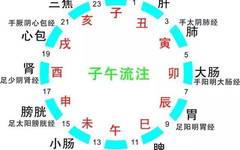Traditional Chinese Medicine (TCM) believes that the qi (气) within the human body flows like tides, rising and falling through the various meridians over time, with different meridians being active at different hours. By aligning with these changes in the meridians, one can achieve effective health maintenance. The twelve meridians are the main body of the meridian system, with each meridian corresponding to a specific organ, also known as the “Twelve Regular Meridians” (十二正经). The twelve meridians connect through the yin and yang channels of the hands and feet, forming a continuous cycle of circulation. Qi and blood flow through the meridians to nourish the organs internally and reach the skin externally, circulating throughout the body. The flow of the twelve meridians follows a specific order, starting from the Hand Taiyin Lung Meridian (手太阴肺经) and sequentially passing through the Hand Yangming Large Intestine Meridian (手阳明大肠经), Foot Yangming Stomach Meridian (足阳明胃经), Foot Taiyin Spleen Meridian (足太阴脾经), Hand Shaoyin Heart Meridian (手少阴心经), Hand Taiyang Small Intestine Meridian (手太阳小肠经), Foot Taiyang Bladder Meridian (足太阳膀胱经), Foot Shaoyin Kidney Meridian (足少阴肾经), Hand Jueyin Pericardium Meridian (手厥阴心包经), Hand Shaoyang Sanjiao Meridian (手少阳三焦经), Foot Shaoyang Gallbladder Meridian (足少阳胆经), and Foot Jueyin Liver Meridian (足厥阴肝经), before returning to the Hand Taiyin Lung Meridian.

The pathways and connections are as follows: the three yin meridians of the hands start from the chest and travel to the hands, connecting with the three yang meridians at the fingertips; the three yang meridians of the hands travel from the hands to the head, connecting with the three yang meridians of the feet on the face; the three yang meridians of the feet travel from the head to the feet, connecting with the three yin meridians at the toes; the three yin meridians of the feet travel from the feet to the abdomen, connecting with the three yin meridians of the hands in the chest and abdominal cavity.
1. Hand Taiyin Lung Meridian (手太阴肺经)
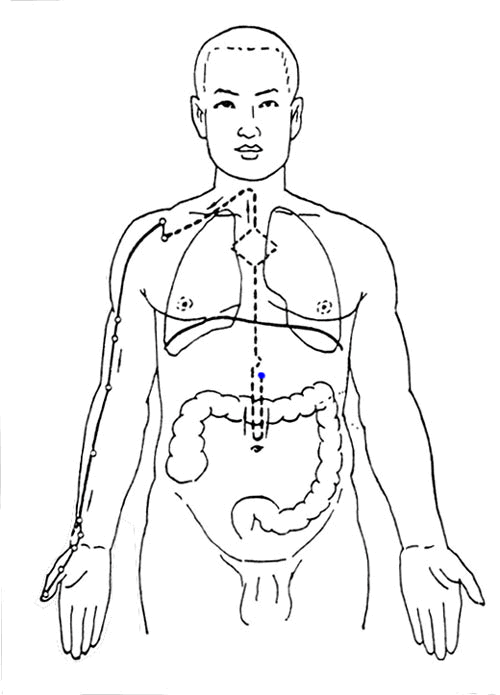
Flow Time: Yin Hour (3 AM to 5 AM)
Indications: This meridian’s acupoints are used to treat cough, asthma, hemoptysis, sore throat, and other lung-related disorders, as well as other conditions along the meridian’s pathway.
Health Tips: TCM suggests that during the Yin hour, the qi and blood flow into the Lung Meridian, where the lungs redistribute the body’s qi and blood, marking the beginning of the meridian’s activity. Individuals with lung issues often wake up during this hour, indicating insufficient qi and blood. Therefore, diseases related to the Lung Meridian, such as allergic asthma and cough, often manifest at this time, especially in children with allergic asthma who may wake up coughing. Is there a way to address this issue? According to the theory of treating the source of organ diseases, if the lungs are affected, one should target the Lung Source Point, which is the Taiyuan Point (太渊穴). The pathway of the Lung Meridian starts from the Middle Jiao, connects to the Large Intestine, follows the Stomach, ascends to the lungs, exits under the armpit, descends along the inner arm, passes through the elbow, travels along the inner forearm, enters the wrist, and flows to the tip of the thumb. The branch exits from the wrist, travels along the index finger, and reaches its tip.
2. Hand Yangming Large Intestine Meridian (手阳明大肠经)
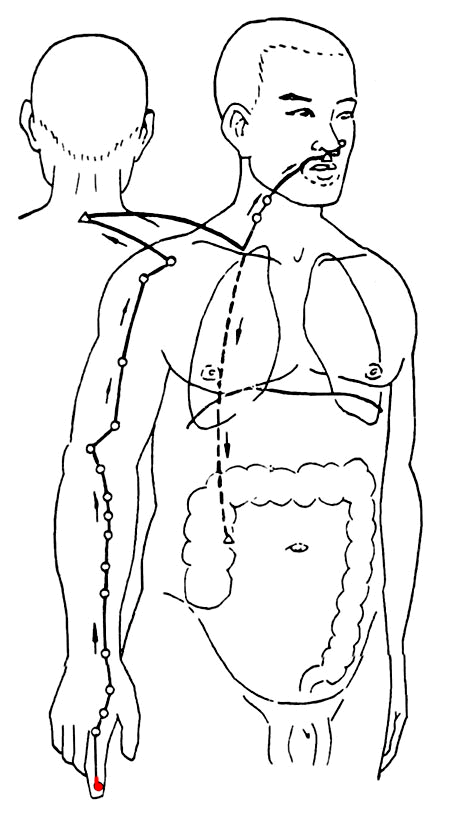
Flow Time: Mao Hour (5 AM to 7 AM)
Indications: This meridian’s acupoints are used to treat diseases of the head and face, febrile diseases, mental disorders, and other conditions along the meridian’s pathway.
Health Tips: The lungs distribute fresh blood throughout the body, which then stimulates the Large Intestine to absorb moisture and nutrients from food and eliminate waste. It is advisable to wake up during the Mao hour, drink a cup of warm water, and then go to the bathroom to detoxify. However, do not rush to the bathroom, as hurrying can lead to stroke; take five minutes to relax before going. The lungs and Large Intestine are interrelated in TCM, and practitioners often inquire about bowel movements, as their quality reflects the strength of heart and lung function. When heart blood is abundant, the stool is banana-shaped, thick, and long; when heart blood is deficient, the stool is particularly thin. The pathway of the Large Intestine Meridian starts from the tip of the thumb and index finger, travels along the outer side of the fingers, enters between the bones of the hand, ascends along the outer arm, enters the elbow, travels along the outer forearm, ascends to the shoulder, exits in front of the shoulder blade, and enters the chest cavity, connecting to the lungs and belonging to the Large Intestine.
3. Foot Yangming Stomach Meridian (足阳明胃经)
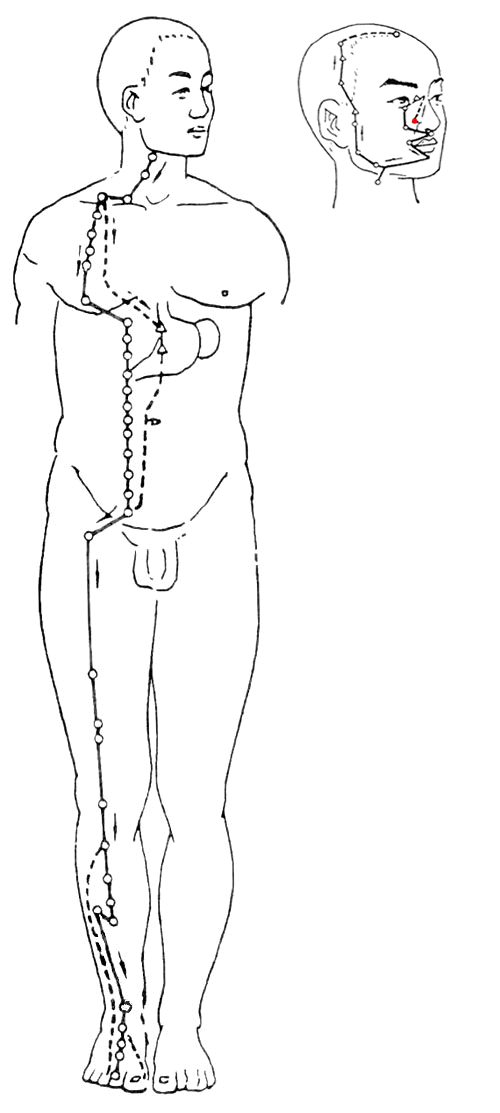
Flow Time: Chen Hour (7 AM to 9 AM)
Indications: This meridian’s acupoints are used to treat gastrointestinal diseases, diseases of the head and face, mental disorders, febrile diseases, and other conditions along the meridian’s pathway.
Health Tips: Breakfast during this time is the easiest to digest and absorb. It is advisable to consume gentle, stomach-nourishing foods such as congee, oatmeal, or steamed buns. Foods that are too hot or dry can lead to excessive stomach fire, causing dry lips and sores. Skipping breakfast can lead to continuous secretion of gastric acid, and prolonged hunger can result in gastric ulcers, gastritis, duodenitis, and cholecystitis. Massaging the Stomach Meridian one hour after meals can help regulate gastrointestinal function. Eating a good breakfast is important, and overeating is less likely to lead to weight gain because the Spleen and Stomach can metabolize it, while dinner should be lighter. Following the natural rhythms of heaven and earth in meal times is the way to health maintenance. The pathway of the Stomach Meridian starts from the center of the nose, descends along the outer nose, enters the upper teeth, exits at the mouth, encircles the lips, descends to the chin, follows the jawline, ascends to the ear, passes in front of the ear, follows the hairline, reaches the forehead; its branch starts from the jaw, descends to the throat, enters the chest cavity, and connects to the Spleen.
4. Foot Taiyin Spleen Meridian (足太阴脾经)

Flow Time: Si Hour (9 AM to 11 AM)
Indications: This meridian’s acupoints are used to treat spleen and stomach diseases, gynecological diseases, and other conditions along the meridian’s pathway.
Health Tips: “The Spleen governs transportation and transformation, and it controls blood.” The Spleen is the main regulator of digestion, absorption, and excretion, and it also governs the quality of blood. “The Spleen opens to the mouth, and its manifestation is in the lips.” When the Spleen functions well, digestion and absorption are good, and blood quality is high, resulting in rosy lips. Pale lips indicate insufficient qi and blood, while dark or purple lips indicate cold entering the Spleen Meridian. The pathway of the Spleen Meridian starts from the tip of the big toe, travels along the inner side of the toe, ascends to the inner ankle, follows the tibia, enters the abdomen, connects to the Spleen and Stomach, ascends to the diaphragm, connects to the throat, and links to the root of the tongue, dispersing under the tongue; its branch starts from the Stomach, ascends to the diaphragm, and enters the heart.
5. Hand Shaoyin Heart Meridian (手少阴心经)
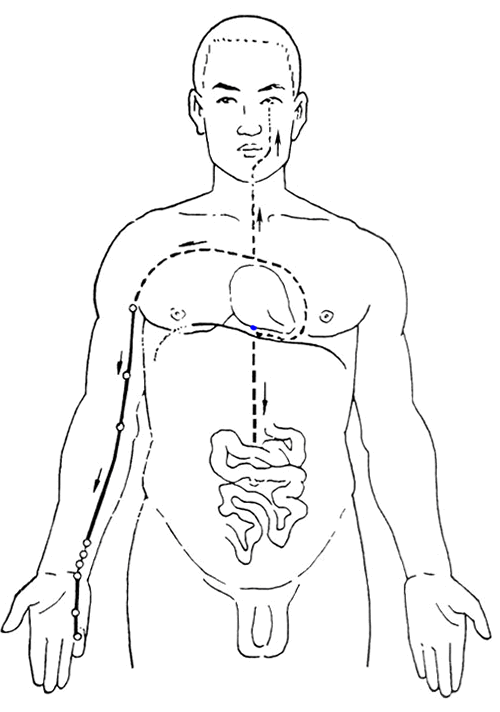
Flow Time: Wu Hour (11 AM to 1 PM)
Indications: This meridian’s acupoints are used to treat heart, chest, and mental disorders, as well as other conditions along the meridian’s pathway.
Health Tips: A short rest during the Wu hour can calm the mind and nourish the spirit. “The heart governs the spirit, opens to the tongue, and its manifestation is in the face.” The heart qi promotes blood circulation, nourishing the spirit, qi, and tendons. Taking a short nap during this time is beneficial for heart health, allowing one to feel energized from the afternoon to the evening. The pathway of the Heart Meridian starts from the heart, exits to the heart system, descends to connect with the Small Intestine; its branch ascends from the heart system, follows the throat, connects to the eyes; its direct pathway descends from the heart system, follows the inner arm, travels along the inner forearm, reaches the palm, follows the little finger, and exits at its tip.
6. Hand Taiyang Small Intestine Meridian (手太阳小肠经)
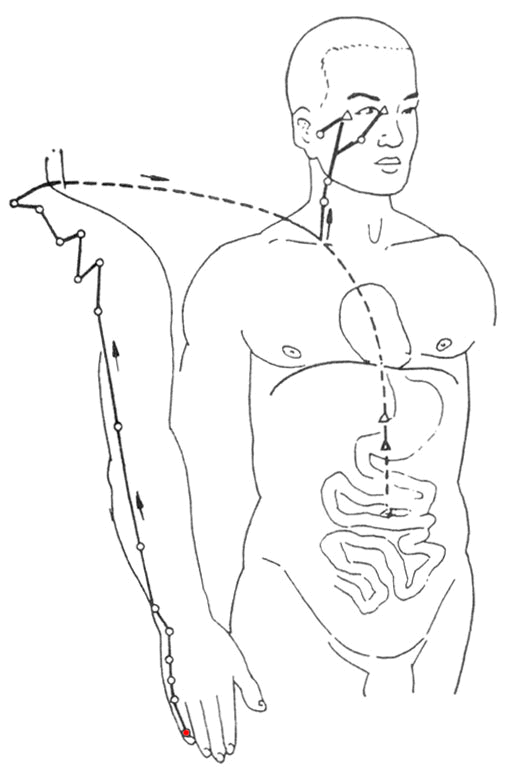
Flow Time: Wei Hour (1 PM to 3 PM)
Indications: This meridian’s acupoints are used to treat diseases of the head, neck, ears, eyes, throat, febrile diseases, mental disorders, and other conditions along the meridian’s pathway.
Health Tips: During the Wei hour, the Small Intestine differentiates clear from turbid, directing fluids to the Bladder and sending waste to the Large Intestine, while the essence is transported to the Spleen. The Small Intestine Meridian adjusts the body’s nutrition during this time. If there is heat in the Small Intestine, one may experience dry cough and flatulence. Drinking more water and tea during this time is beneficial for cooling the Small Intestine. The heart and Small Intestine are interrelated; heart disease may initially manifest in the Small Intestine. If one experiences chest tightness or palpitations around 2 or 3 PM, or has a flushed face, it may indicate heart issues. The pathway of the Small Intestine Meridian starts from the tip of the little finger, travels along the outer side of the wrist, ascends to the elbow, follows the outer arm, and enters the chest cavity, connecting to the Small Intestine; its branch ascends from the chest, follows the neck, reaches the eyes, and enters the ear.
7. Foot Taiyang Bladder Meridian (足太阳膀胱经)

Flow Time: Shen Hour (3 PM to 5 PM)
Indications: This meridian’s acupoints are used to treat diseases of the head, neck, eyes, back, waist, and mental disorders, as well as related organ diseases.
Health Tips: During the Shen hour, body fluids are abundant, nourishing the body and promoting comfort. The Bladder stores and expels fluids, while body fluids circulate within. If there is heat in the Bladder, it may cause bladder cough and urinary incontinence. The body temperature is relatively high during this hour, and those with yin deficiency may feel particularly pronounced symptoms. Moderate activity can help circulate body fluids, and drinking cooling teas is most effective for those with yin deficiency. The Bladder Meridian passes through the head, making this an optimal time for learning, as memory and judgment are most active, leading to high work efficiency. Symptoms such as calf pain, headaches, and memory decline are related to the Bladder Meridian, indicating that one may be experiencing yang deficiency, with qi and blood not rising. Daily exercises such as bending, leaning forward, and back stretching can help improve these symptoms. The pathway of the Bladder Meridian starts from the inner canthus of the eye, ascends to the forehead, connects at the crown; its branch travels from the crown to the upper ear; its direct pathway enters the brain, exits the neck, follows the spine, reaches the waist, and connects to the Bladder; its branch descends from the waist, follows the spine, enters the buttocks; its branch travels from the shoulder, descends along the outer thigh, exits at the outer ankle, and follows the foot to the little toe.
8. Foot Shaoyin Kidney Meridian (足少阴肾经)

Flow Time: You Hour (5 PM to 7 PM)
Indications: This meridian’s acupoints are used to treat gynecological diseases, urogenital system diseases, and conditions related to the kidneys, lungs, heart, liver, brain, throat, and tongue, as well as other conditions along the meridian’s pathway.
Health Tips: During the You hour, the kidneys store essence and absorb the vital energy. “The kidneys store reproductive essence and the essence of the five organs and six bowels. The kidneys are the root of pre-natal energy.” After the Shen hour’s detoxification, the kidneys enter a phase of storing essence. It is not advisable to engage in intense exercise or drink large amounts of water during this time. The Kidney Meridian is most active during this hour, making it the best time for foot baths. The pathway of the Kidney Meridian starts from beneath the little toe, travels along the sole of the foot, exits beneath the heel, follows the inner ankle, ascends along the inner leg, enters the spine, connects to the kidneys; its direct pathway ascends from the kidneys, enters the liver, reaches the lungs, follows the throat, and connects to the root of the tongue; its branch ascends from the lungs, connects to the heart, and enters the chest.
9. Hand Jueyin Pericardium Meridian (手厥阴心包经)
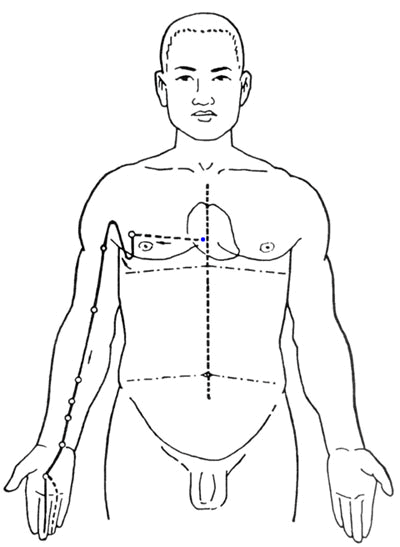
Flow Time: Xu Hour (7 PM to 9 PM)
Indications: This meridian’s acupoints are used to treat heart, pericardium, chest, stomach, and mental disorders, as well as other conditions along the meridian’s pathway.
Health Tips: During the Xu hour, it is important to protect the heart and reduce stress for a relaxed heart. What is the pericardium? The pericardium is the outer membrane of the heart, primarily protecting the myocardium’s normal function. One should prepare for sleep or enter a light sleep state during this time. The heart’s outward flow is responsible for a function called joy. The Pericardium Meridian also governs joy, so it is essential to maintain a cheerful mood during this time and engage in relaxing activities such as reading, listening to music, or chatting. The pathway of the Pericardium Meridian starts from the chest, exits to the pericardium, descends to connect with the Sanjiao; its branch travels from the chest along the ribs, descends three inches below the armpit, ascends to the armpit, follows the inner arm, travels between the two tendons, enters the palm, follows the middle finger, and exits at its tip; its branch separates from the palm, follows the little finger, and exits at its tip.
10. Hand Shaoyang Sanjiao Meridian (手少阳三焦经)
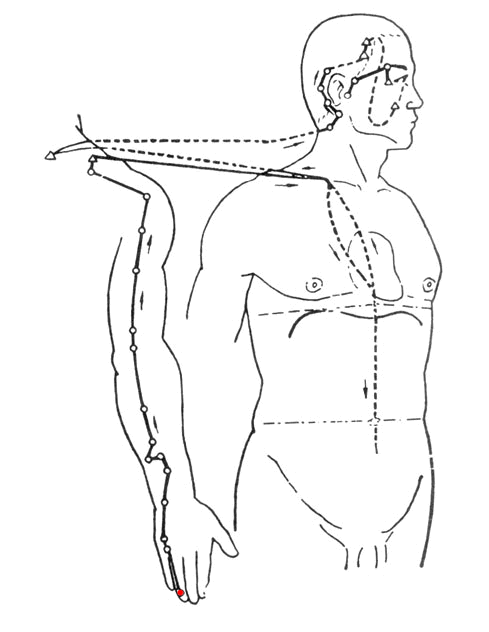
Flow Time: Hai Hour (9 PM to 11 PM)
Indications: This meridian’s acupoints are used to treat diseases of the head, eyes, ears, cheeks, throat, chest, and febrile diseases, as well as other conditions along the meridian’s pathway.
Health Tips: What is the Sanjiao? The Sanjiao refers to the membranous area connecting the five organs and six bowels. Generally, the heart and lungs belong to the upper jiao, the spleen and stomach belong to the middle jiao, and the liver and kidneys belong to the lower jiao. The Sanjiao is the “hub”; if the hub has issues, the entire system will be affected. Ancient wisdom suggests that the Hai hour is the most suitable time for reproduction and fertility, and modern science also indicates that around 10 PM is the best time for intimate activities. Couples planning to conceive should prepare for sleep during this time. The pathway of the Sanjiao Meridian starts from the tip of the little finger, ascends between the two fingers, travels along the wrist, exits between the two bones of the arm, ascends to the elbow, follows the outer arm, enters the chest cavity, disperses in the middle of the chest, connects to the pericardium, descends to the diaphragm, and follows the Sanjiao; its branch travels from the middle of the chest, ascends to the neck, connects to the ear, and exits at the upper ear, descending to the cheek and reaching the eyes.
11. Foot Shaoyang Gallbladder Meridian (足少阳胆经)
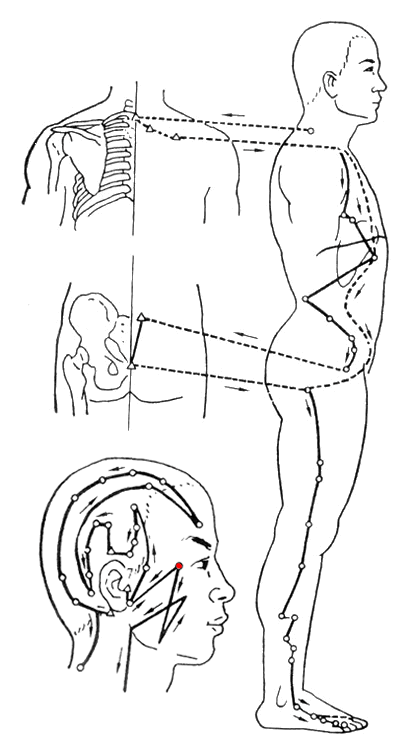
Flow Time: Zi Hour (11 PM to 1 AM)
Indications: This meridian’s acupoints are used to treat liver and gallbladder diseases, as well as diseases of the head, eyes, ears, throat, mental disorders, febrile diseases, and other conditions along the meridian’s pathway.
Health Tips: Sleeping well during the Zi hour prevents dark circles. TCM theory states, “The excess qi of the liver is discharged into the gallbladder, where it accumulates and forms essence.” If one sleeps before the Zi hour, the gallbladder can complete its metabolism. “The clearer the bile, the clearer the mind.” Those who sleep before the Zi hour wake up feeling clear-headed and rosy, without dark circles. Conversely, those who cannot fall asleep during this hour may appear pale and have dark circles under their eyes. Poor bile metabolism can also lead to the formation of crystals and stones. The pathway of the Gallbladder Meridian starts from the inner canthus of the eye, ascends to the head, descends behind the ear, follows the neck, travels along the hand’s Shaoyang, reaches the shoulder, connects to the Sanjiao, enters the chest cavity; its branch travels from behind the ear to the ear, exits in front of the ear, reaches the eyes, and descends to the jaw, connecting to the chest, passing through the diaphragm, connecting to the liver, and following the ribs, exiting at the qi street, circling the hairline, entering the hip area; its direct pathway descends from the chest, follows the ribs, passes through the hip area, and descends to the outer ankle, following the foot to the little toe; its branch separates at the ankle, enters between the big toe and the second toe, and follows the big toe to its tip, also connecting to the nails.
12. Hand Jueyin Liver Meridian (手厥阴肝经)
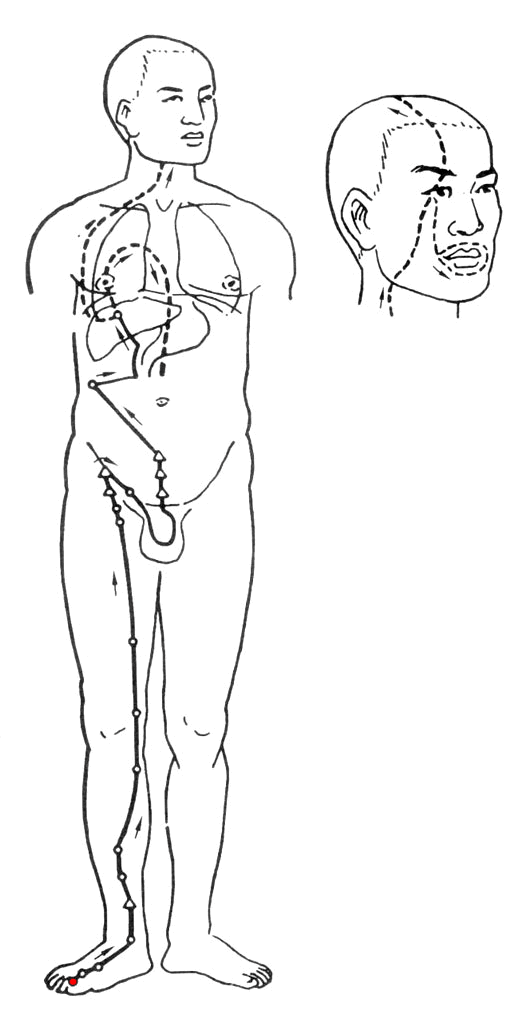
Flow Time: Chou Hour (1 AM to 3 AM)
Indications: This meridian’s acupoints are used to treat liver diseases, gynecological diseases, and other conditions along the meridian’s pathway.
Health Tips: TCM theory states, “The liver stores blood.” “When a person sleeps, blood returns to the liver.” If one cannot sleep during the Chou hour, the liver continues to expend energy to support thought and action, preventing metabolic processes from completing. Therefore, those who cannot sleep before the Chou hour may appear gray, exhibit emotional instability, and are at risk of developing liver diseases, with a dull complexion and dark spots. The pathway of the Liver Meridian starts from the tip of the big toe, travels along the outer side of the foot, ascends to the inner ankle, follows the inner leg, enters the abdomen, connects to the liver and gallbladder, ascends to the diaphragm, disperses in the ribs, follows the throat, ascends to the head, connects to the eyes, and exits at the crown; its branch travels from the eyes, descends to the cheeks, encircles the lips; its branch also ascends from the liver, enters the diaphragm, and connects to the lungs.
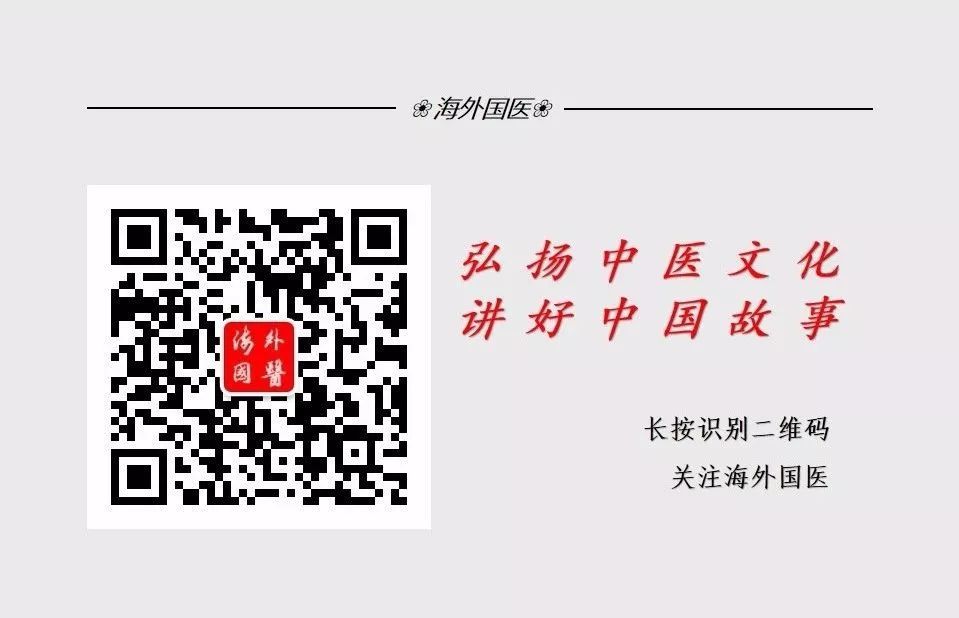
Click here to read more: Basic knowledge of TCM, which is precious and worth collecting!
What drains your yang energy are these fashionable habits you think are good: exercising at night, washing your hair in the morning, not eating rice…
What is health maintenance? This is an article that has awakened countless people and is worth reading again and again!
Click “Read the original” below to see more exciting content.

